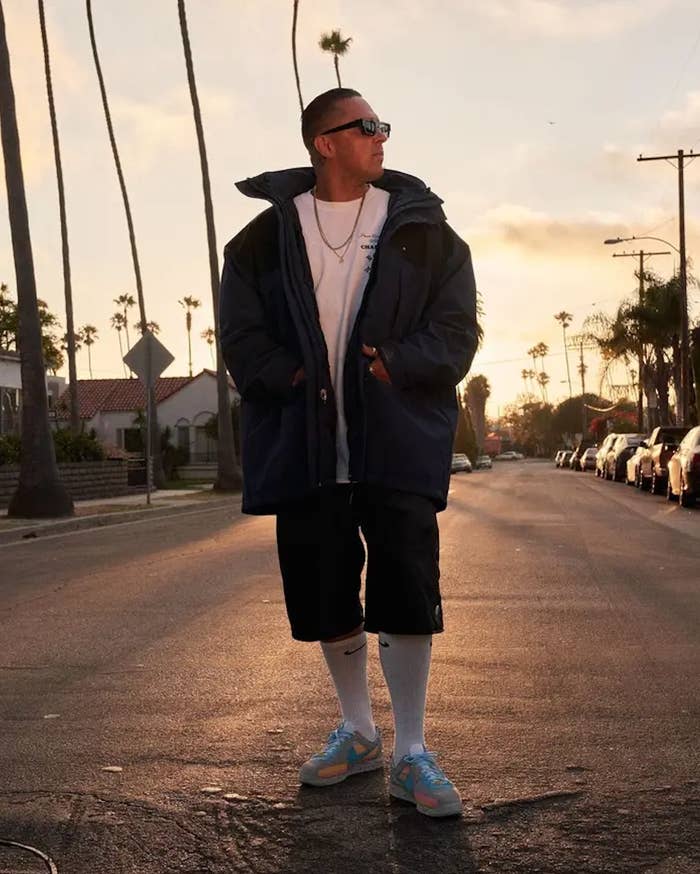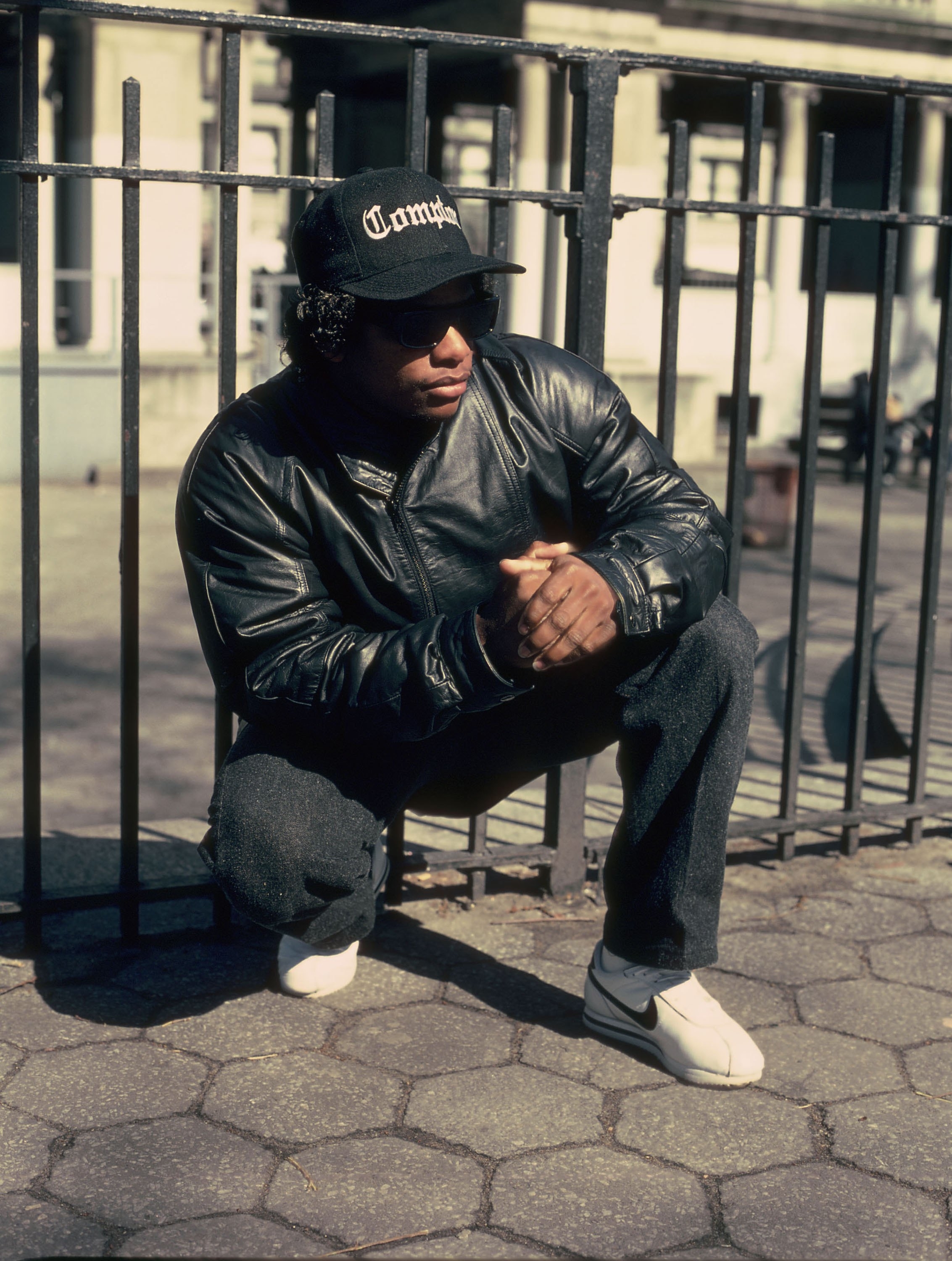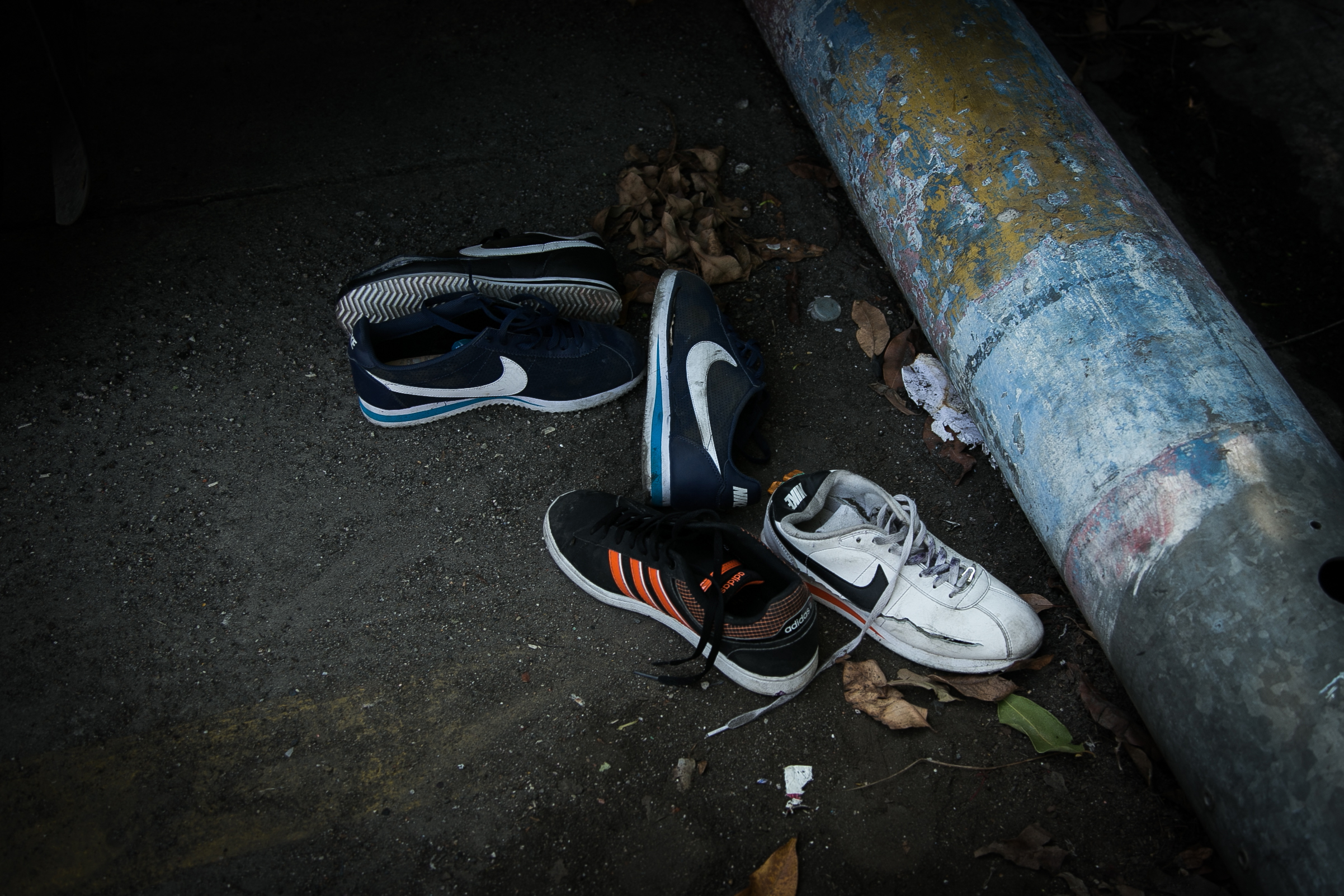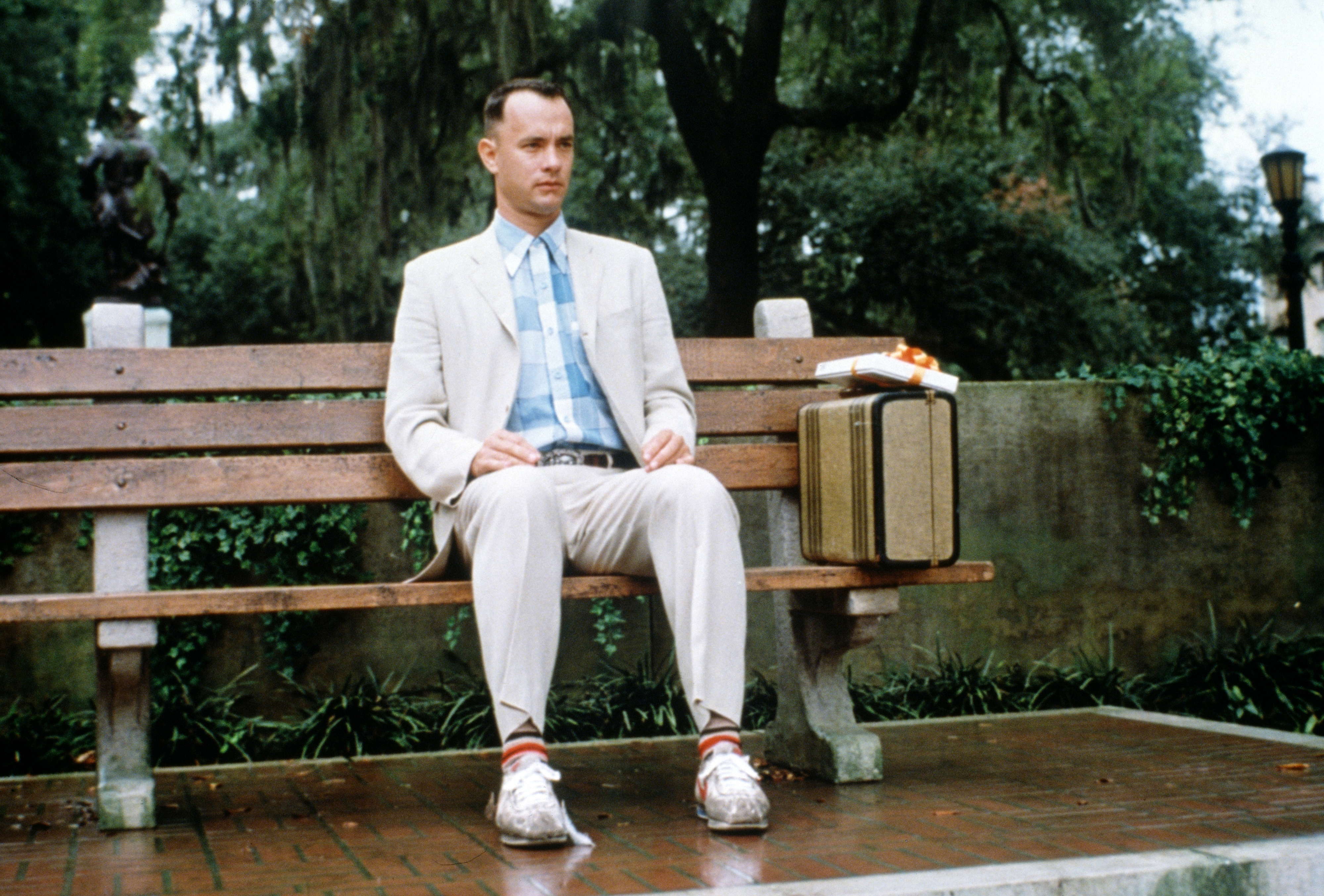
The Nike Cortez could be a dangerous sneaker when and where Chris "Spanto" Printup grew up. Because of its association with the street life, his mom was wary of him wearing the sneakers in the Venice section of Los Angeles in the '80s and '90s.
“You can't wear that fucking thing; you can't wear that shoe. Shit’s not going to end up well if I buy you this pair of shoes,” he recalled his mother telling him.
Last week Spanto, who founded Los Angeles streetwear brand Born x Raised, died at age 42 after a car accident in Albuquerque.
I never got to meet Spanto in person. And it’s something I deeply regret. I got the chance to interview him in 2017 over the phone, thanks to our mutual friend Jimmy Gorecki, for a story I was writing on the history of the Nike Cortez in Los Angeles.
I wanted to get the perspective from someone who lived through the sneaker’s peak in the city in the '90s and understood its connection to L.A.’s street culture. Spanto was that guy. I remember Jimmy telling me he’d ask Spanto if he’d be down to talk to me, but he didn’t promise that he could make it happen because Spanto wasn’t big into giving interviews left and right. Luckily he gave me some of his time, and it’s one of the most candid conversations I’ve ever had with someone about footwear.

I don’t know what I was expecting to hear from him, but he gave me a firsthand account of the Cortez in L.A. in the '90s that showed that he witnessed that shoe’s importance to his hometown of Venice.
The next year, in 2018, I saw Spanto at ComplexCon in Long Beach. Born x Raised had a booth and he was the center of attention. This was at the beginning of Full Size Run’s history, and I was too nervous to go up to say hi to him, thinking maybe he wouldn’t remember me or know who I was. I wish I would have just said something.
At the time of his death, Spanto was weeks away from the release of his first proper collaboration with Nike SB on a pair of Dunks that reference the L.A. he grew up in. “One Block at a Time” on the toe. “On the Turf” on the side of the tongue. There was a pair of pink bandana laces that came with the shoes too. Earlier last month, Spanto gifted the sneakers to the graduating class of Venice High School before their release.
Nike has pushed back the release of the Born x Raised SB Dunk to an undetermined date.
After hearing the news of Spanto’s death, I went through my emails to see if we had any correspondence from the time that we talked. Instead I found the audio from the interview, which had only been published in small tidbits for the story we ran at the time. After talking things over with our editorial team, we felt it was fitting to give the public a look into Spanto’s love for footwear and his intimate memories of the Cortez. Rest in peace, Spanto.
This interview has been edited for length and clarity.
Obviously, with the Cortez, it's not just a sneaker. I figured talking to you, a guy from L.A. who's been through it all and been part of the culture—I would just love to hear your take on it.
Yeah, I think it's pretty simple why that shoe ended up being such a staple shoe for L.A. youth that I'm going to go ahead and say it: The shoe was for the hood. It wasn’t mainstream fashion like it is now, which that's a whole different conversation, but I think it's just something that's real simple. Accessibility and price point, it's what made that shoe what it is. I think that shoe was just real accessible. It was like, they sold it at every swap meet, every hood, shoe store, shoe warehouse, stuff like that for 20, 30 bucks.

I just think that it just fits the aesthetic of the L.A. attire, how we dressed in the '80s and '90s. It just summed up everything that we had going on, which was classic American workwear, Dickies, Ben Davis, that sort of thing. And like I said, it was much more to wear a Cortez back then; everything has changed obviously. I'm going to point out the elephant in the room, which is the internet, but back then you didn't wear that shoe unless you were about your shit. If you weren't about your shit and you wore that shoe to school or the movies or even the promenade or whatever, please believe that you were going to get pressed. And then if you weren't about your shit, your shoes would probably be revoked. Your shoe privileges have been revoked.
Isack Fadlon of Sportie LA told me that during the ‘90s, even though it was such a popular shoe, the sales went down because people were afraid to wear it.
It was like 8-Ball jackets and fools were getting held up for them. It was just a real statement to wear a pair of fucking Cortez back then. In the '80s is one thing, but I think even in the ‘90s, I categorized everything until pre- and post-riots here in Los Angeles. The riots happened, and then everything after that got so intense. The music changed; the clothing changed. Everything changed after the riots.
After the riots happened, the city belonged to the kids again. Or not the kids, but just the youth, the people, because the police presence wasn't as heavy as it was. They had to take steps back. Back then, '93, '94, if you wore a pair of fucking shoes, you were going to get pressed. If you wore a pair of Cortez, you were going to get pressed. It was a really bold statement to put those shoes on and walk outside.
Beyond that, why do you think, even beyond gang culture, the shoe itself has just stayed as, “L.A.’s Air Force 1”?
Yeah, it is L.A.'s Air Force 1. Like I said, it just contributed to what went best with what we were wearing at the time. You know what I mean? It was very workwear. It was like Dickies, Levi’s 501s, Ben Davis, that sort of thing. And it just went well with the uniform. And that was definitely the uniform back then.
You said sales plummeted with the Cortez in the '90s, correct?

Yes, because I was told it had a real association with gang culture. [Fadlon] said that sales on the shoe—I thought it would've picked up—but like he said, it slowed down for him because the average person was afraid to buy the sneaker.
You couldn't wear a pair of those fucking things. I remember I had a pair in fourth grade, and then fifth grade I went to go get a pair and my mom was like, "I'm not buying those fucking shoes for you.” They were like, “Nah, not where we live. You can't wear that fucking thing; you can't wear that shoe. Shit’s not going to end up well if I buy you this pair of shoes.”
Did they get banned from schools or anything like that?
They did. They banned anything that was black and white. They banned all Raiders gear, all Kings gear, anything that had that sort of aesthetic, black and white Cortez. The canvas ones, it was more so the canvas ones, too, than the leather ones that I think they were just more of a dicey statement if you were wearing them.
It was fourth grade. It was cool because they were cheap. My mom bought them for me and both of my brothers. And then fifth grade, I went to get them and she was like, “No, no, no, no, no, no, no. That's not going to happen."
Just one year, the culture shifted. The culture changed. The energy changed. Parents were just trying to hide their kids from it, which I didn't really understand because I just wanted to be down. I grew up in Venice in the '80s and '90s, which is fucking Disneyland now, but in the '90s, Venice was fucking crazy, man. It was wild as fuck. I looked outside and there was four dudes from my neighborhood there that lived on my street. There was all these older gentlemen that used to hang out on my street, and I just wanted to dress like them, act like them, hang with them. I just wanted to be down. But mom was like, "No, no, too many troubles outside. I don't want you dressing like that. You're going to get shot.”
And it could be just so simple as, because gangbanging got so drastic in the '90s, they were just itching to shoot anybody. It could have been something as simple as just like, "Yo, that boy has a pair of Cortez on—dump on him.”
You see someone like Kendrick wearing the Cortez. What's your take on that? Do you think it’s dope to see L.A. artists wearing it?
I think it's cool because it's a part of our culture growing up in L.A. That shoe, it's like it's ingrained in L.A.'s DNA, and there's no changing that. I think it's dope that Kendrick wears that shit. Kendrick's from L.A.; he gets it. It's a part of his growing up. I think it's cool. Things have changed. It's not as dangerous anymore. It's a bit more mellow. I make crewnecks and T-shirts that have the traditional memorial Old English font. Back then, you couldn't wear a crewneck or a hoodie like that either in the '90s. That was a real bold statement. I think it's dope that Kendrick is wearing a Cortez. It makes perfect sense. Maybe some of the stuff that's going on, the cultural appropriation that's happening right now, I think some of that shit's weird, you know what I mean? But then again, yo, it's that shoe—the shoe wasn't just made for us. It was made for something else. Then it gets complicated.
Even though it was such a big part of L.A. gang culture, during the same period it was also in Forrest Gump and George Costanza was wearing the same sneaker on Seinfeld.
I always look at George Costanza when he wore them. It's just, it's funny. George Costanza, he plays just such a good schlemiel. He probably went and bought this shoe because it was on sale at Shoe Mart. I don't even know why the shoe was originally crafted. Was it supposed to be a running shoe? Was it a badminton shoe? I'm not even sure.

I remember there was this kid named Lionel who came from across the pond. He was in fifth grade and he came in the middle of the year, and he had a pair of green and yellow Cortez on. I remember when he walked in, everybody started snickering like, "Oh shit, who is this kid? Why is he wearing that fucking pair of shoes?" But then we realized, “Oh no, he's from somewhere over there.” It was just a big deal when he walked in; everybody got quiet.
Do you think it's weird that the shoe’s gotten gentrified? You see it in Vogue, girls in Paris Fashion Week wearing Cortez.
Fuck man. I don't know. I don't really have an opinion right now. If you would've asked me six months ago, I would've been like, "Yeah, fuck that. It's not OK.” But it's just a shoe. I went to Whole Foods last week and I tweeted, "There's way too many pairs of Cortez in this Whole Foods." It's funny. But I don't. It's a silhouette owned by Nike. No, I don't. It's fine.
We just say that these are sneakers, but at the end of the day, they really are part of our culture.
They really are. I used to get bent out of shape when people refer to streetwear as a culture. I'm like, "Yo, this isn't a culture, man.” This is shit that's made in China. And it's corporate, and people are making money off of it. And I still feel sorry for these kids that are calling this a culture. But the more I look into it, and the more I look at it, it really is a culture. There is a whole culture based around what's going on right now, so I can't get mad at that either.
I've already interviewed a handful of other people, but, personally, I feel what’s telling this story is your point of view; at least to me, what was going on is the core, meat part of it. It's like, you can read about it in a newspaper, but if you don't get the story from the person who lived it, to me it's meaningless.
A lot of people don't notice because it's very regional; it was a very regional thing. I don't know if you're going to put this in there, but when I was a kid growing up—see, I'm from the Four Corners. The Four Corners is Venice, Culver City, 17th Street, and Sawtelle; that's like a pocket of the West Side, which is completely gentrified now. But kids from the Four Corners, we didn't wear Cortez. We wore our version—we wore the Reebok Classic. I never really touched the Cortez after fourth grade. We looked at it as dusty East Side gangster, all them dirty-ass East Side fools over there that dress funny.
We were more into Polo, Nautica. We even wore a lot of Donna Karan, shit like that. And like I said, we wore the white Reebok Classic, which is why I did a Reebok Classic two years ago. It was my favorite shoe on the planet. If we saw somebody wearing Cortez, they had that look. It was like, well they obviously ain't from around here. Or they were outdated.
Would that cause beefs?
Hell yeah. If we were on the boardwalk and we saw, like, a bald-headed dude wearing a pair of Cortez, it’s like, yo, hop on him. Go figure him out. “Wait, what's up man? Obviously you ain't from around here. Where'd you come from? What you got in your pocket? Alright then, I'll see you later.”
I got to head out. But I appreciate you taking your time, man.
For sure. Sorry I don't have more to offer you.


